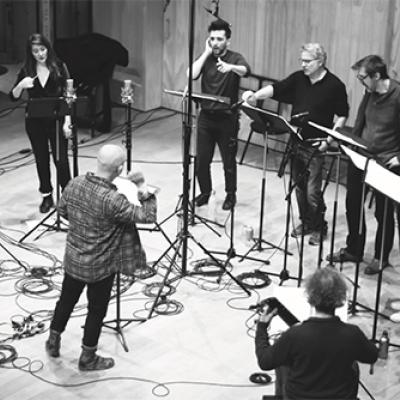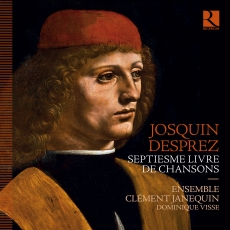Ensemble Clément Janequin
Ensemble Clément Janequin

In the late '70s and early '80s, as the music world was being reshaped by the emergence of the great English a cappella ensembles (Gothic Voices, the Tallis Scholars, the Hilliard Ensemble), a virtuoso countertenor from France launched a sonic revolution of his own.
Biography
The singer, Dominique Visse, founded the Ensemble Clément Janequin in 1978, and over the 20 years of the group's career it has virtually come to own the performance of Renaissance French music. The ensemble's characteristic panache and vigor has produced authoritative interpretations, especially for the 16th century chanson repertory. Among the ensemble's many recordings, more than 10 collections of French vernacular music have taken center stage. These have included music of the group's namesake, Clément Janequin and his contemporary Claudin de Sermisy, as well as Anthoine de Bertrand, Costeley, Roland de Lassus, and Claude le Jeune. Much that is unique to the sound of Ensemble Clément Janequin derives from the peculiar artistry of its founder.
Dominique Visse is a celebrated countertenor with a long list of operatic triumphs, from Baroque performances under William Christie and René Jacobs to a premiere of Luciano Berio's Outis. His bright, facile, and often irreverent virtuosity may be heard in the upper reaches of nearly every piece recorded by the ensemble, and has helped mold the other players musically. The ensemble performs primarily with one or two voices to a part, bringing to the foreground the individuality of musical lines. The bright and often nasal vocal quality of Visse's other singers, with some subtle ornamentation, heightens this vertical differentiation. Instrumental accompaniment (from lutes and gambas to organs, cornetts and sackbuts in a Janequin mass recording), though frequent, remains generally unobtrusive. Utter sympathy with the individuality of texts, however, trumps every other feature of the group's performances. Its first recording, a 1982 collection of Janequin and Sermisy chansons entitled "Les cris de Paris" (The Cries of Paris) palpably demonstrates such text-based stylistic differentiation. The simple bourgeois dignity of the mainstream "Parisian" chanson starkly contrasts with the farcical drama of the title track and with the onomatopeoic "La bataille" (The Battle). The ensemble cultivates for both types of music a forthright, almost rustic sound, but when texts call for evocative dramatic sounds (or bawdy humor, another specialty), its performance is sparked by whispers, shouts, and a generally Carnivalesque soundscape. For sacred repertory (recordings of masses by Le Jeune, La Rue, and a fine rendition of the Josquin Missa Pange lingua), the group adopts a sound that is more spacious but no less vibrant. The ensemble's projects have also included a series of recordings of French settings of the poetry of Pierre de Ronsard and of Rabelais, and, in 1998, a venture into the Spanish Golden Age.

